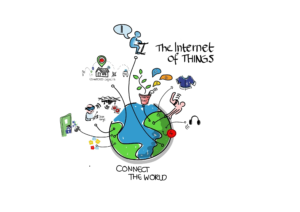How Virtual Reality Is Shaping the Entertainment Industry
Virtual Reality Entertainment is dramatically transforming the entertainment industry, offering unprecedented levels of immersion and interactivity. Imagine a world where you can step into a movie, play a game with lifelike realism, or experience historical events as if they were happening in your own living room. This is no longer science fiction—it’s the reality shaping the entertainment we consume. Many consumers are questioning how this new technology can truly enhance their entertainment options. This article will explore the diverse applications of VR in the entertainment industry, examining its impact on various sectors and highlighting the potential challenges and opportunities that lie ahead.
1. VR's Impact on Gaming: Redefining Interactive Experiences
1.1. Immersive Game Worlds: A New Frontier in Gaming
The gaming industry is experiencing a significant transformation as virtual reality (VR) technologies immerse players in highly engaging and realistic game worlds. VR gaming isn’t just about improved graphics; it’s about a fundamental shift in how we interact with digital worlds. Developers are creating compelling narratives and unique gameplay mechanics that leverage VR’s unique qualities, such as positional tracking, to enhance immersion and player agency. Gamers can explore vast virtual environments, interact with dynamic characters, and feel the full impact of their actions in unprecedented ways. Examples include games that simulate flying through space or exploring the depths of the ocean. The realism of VR gaming is changing expectations about what’s possible in interactive entertainment.
2. VR's Impact on Film and Movies: Pushing Boundaries in Cinematic Storytelling
2.1. Immersive Storytelling: A New Dimension for Film Experiences
Virtual reality is revolutionizing film and movies, offering viewers an unparalleled opportunity to experience cinematic storytelling in an immersive way. VR allows audiences to step into the shoes of characters, become active participants in the narrative, and explore the world within the film’s universe. Imagine experiencing a film as if you were the lead character, navigating their surroundings and experiencing events from their perspective. This level of interaction and immersion alters the way we consume film, transforming a passive experience into something active and personal.
3. The Future of Entertainment: Beyond Gaming and Film
3.1. Interactive VR Experiences in Education
Virtual Reality is not limited to gaming and films; its applications extend into diverse fields, such as education and training. VR simulations provide unique opportunities to develop a deeper understanding of complex concepts, practice skills, and even participate in real-world scenarios in a controlled environment. Imagine training to perform delicate surgery in a virtual environment, practicing techniques without putting patients at risk. These applications hold immense potential for enhancing learning experiences in a multitude of fields, whether it’s a medical student preparing for surgery or a student studying world history in a virtual museum.
4. Challenges and Opportunities in VR Entertainment
4.1. Bridging the Accessibility Gap
While VR offers exciting possibilities for entertainment, accessibility remains a crucial challenge. High costs of VR headsets and limited access to high-speed internet in many parts of the world can restrict widespread adoption. Addressing these accessibility concerns is vital to ensure that VR’s potential benefits reach a broader audience. Subsidies, reduced pricing strategies, and improvements in internet infrastructure are crucial steps. Innovative solutions, like mobile VR experiences or more affordable VR headsets, are emerging as viable options to democratize VR entertainment.
Related Post : How Biotech Is Pushing the Boundaries of Medicine and Healthcare
5. Conclusion: Embracing the VR Revolution
5.1. A New Paradigm in Entertainment
Virtual reality technology is revolutionizing the entertainment sector. It enables unprecedented interaction with digital content and alters consumer perceptions of how we consume and interact with entertainment. By embracing innovation and addressing the challenges of accessibility, we can unlock the full potential of VR and create new possibilities for creativity and audience engagement.
6. VR's Global Impact
6.1. VR Experiences in Various Cultures
VR’s potential to embrace diverse cultural experiences is evident in its ability to transport users to different locations, eras, or even worlds. Think of immersive historical simulations for education or interactive virtual tours of cultural landmarks worldwide. This opens doors for greater cross-cultural understanding and appreciation, especially for audiences who may not have the opportunity to travel extensively.
7. VR and Accessibility
7.1. Reducing the Barrier to Entry
The high cost of VR hardware and software remains a key barrier to wider adoption. However, there are several initiatives in place to reduce this barrier to entry by making the technology more affordable. This includes the development of cheaper VR headsets and promoting creative use cases of the technology in multiple industries. This could include more affordable headsets, mobile VR experiences, or open-source VR content creation tools.
8. VR and the Future of Immersive Experiences
8.1. Integrating VR into Everyday Life
The evolution of VR is heading toward greater integration into our everyday lives, influencing areas like education, training, healthcare, and even social interactions. Immersive experiences powered by VR will become increasingly sophisticated, engaging, and practical, shaping how we learn, work, and connect with the world.
9. VR and Sustainability
9.1. The Environmental Impact
The environmental impact of VR technologies is a growing concern and a topic of investigation as the industry develops. The manufacturing and disposal of VR headsets raise environmental concerns and must be addressed for responsible growth. Efforts to use recycled materials and reduce electronic waste are key components to achieving sustainability goals.
In conclusion, virtual reality is revolutionizing the entertainment industry, offering immersive experiences that transcend traditional methods. From gaming and film to education and training, VR’s potential is immense. By embracing innovation and addressing the challenges of accessibility and affordability, the industry can unlock even more possibilities for creativity and audience engagement. To delve deeper into this transformative technology and its applications, consider exploring VR development courses or attending industry events. This will enable you to harness the power of VR and shape the future of entertainment.
Share this content:














Post Comment